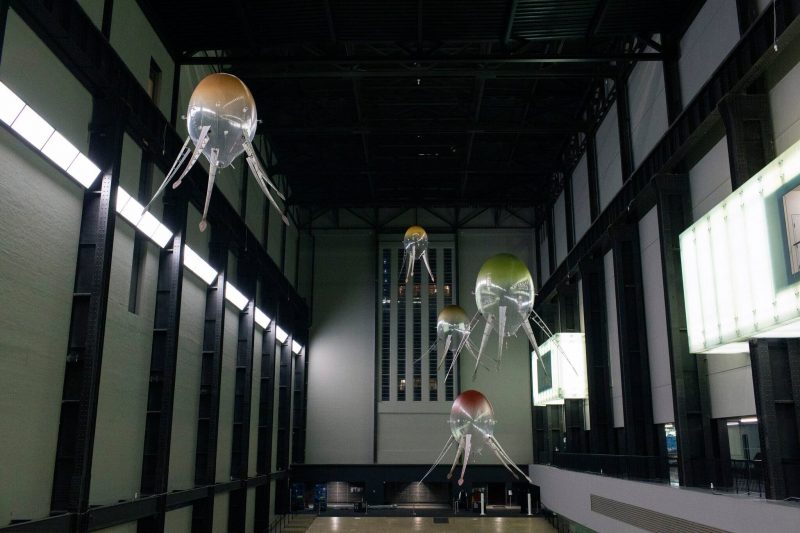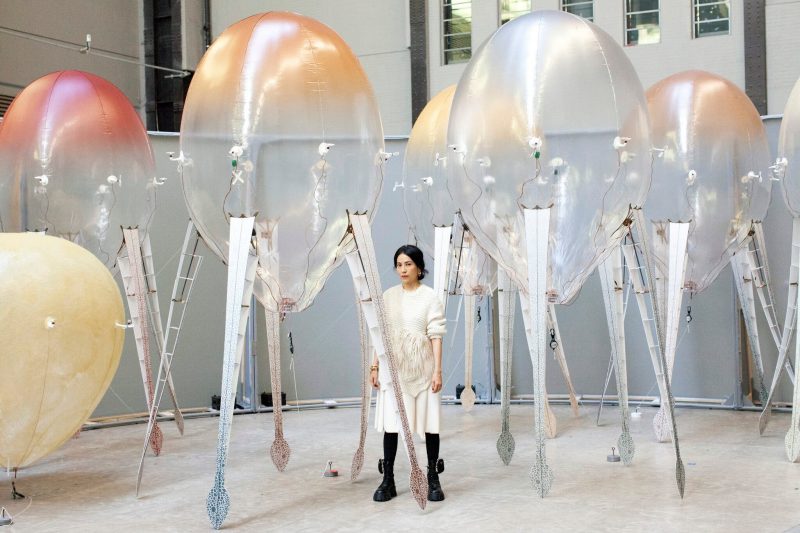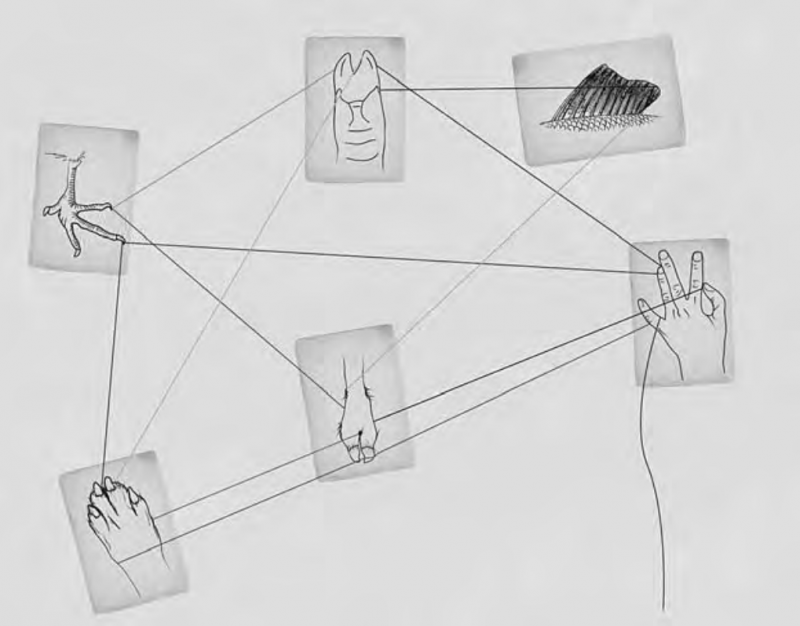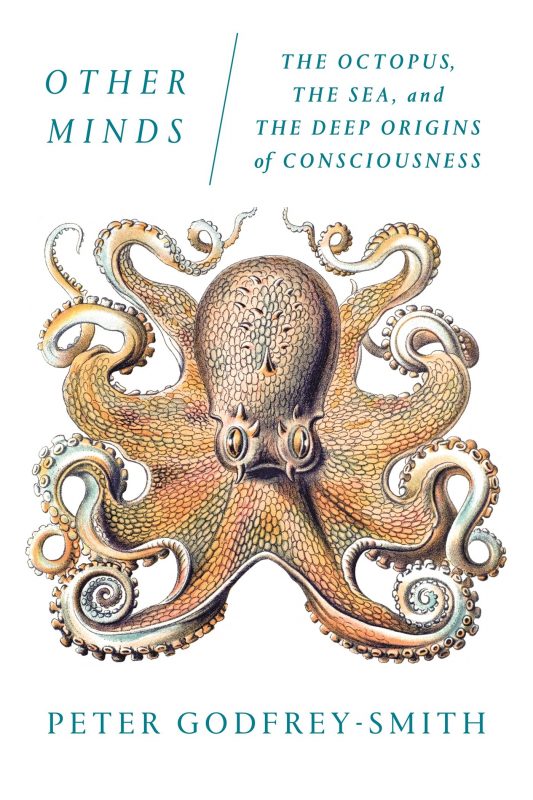Making Machine-Kin
Posted on October 26, 2021Imagine a world where the air is filled with massive, buoyant jellyfish and fungi-like blobs floating overhead. Their proximity teases you, as they’re just out of reach, and their size is intimidatingly large. It’s almost as if they know you’re observing them while they observe you: another sort of intelligence.
That’s exactly what’s happening in the Tate Modern’s Turbine Hall in London where artist Anicka Yi’s exhibit In Love With The World opened this month [4]. Yi is known for her scentscapes and exploration of art at the intersection of biology and technology. One aspect that makes Yi’s work especially provocative is her refusal to foreground the visual aspect of artwork in a space, but rather prioritizes something invisible to the human eye: scent and the human sense of olfaction.

The floating forms respond to the air in Turbine Hall in unpredictable ways. “I want to foreground the idea that air is a sculpture that we inhabit,” Yi said. Credit…Lauren Fleishman for The New York Times [5]
In “In Love With The World,” the massive jellyfish and fungi-like figures are a form of AI, machines she calls aerobes or biologized machines. The way these aerobes operate in the exhibit space is via drone technology that makes them float, algorithms that conduct their individual and collective movement, and heat sensors positioned throughout the space in order to detect and react to the presence of people, acting as stand-ins for their senses. In addition to the aerobes, Yi releases a new scent profile each week into the space that relates to the history of the location of the museum: Bankside. These scents span a timescale that ranges all the way from the Precambrian to the Machine Age, and include some of London’s less becoming smells over history, like those evoked from the bubonic plague [5].

Anicka Yi at Tate Modern this month with the “biologized machines” that will float and undulate in the museum starting on Tuesday.
Credit…Lauren Fleishman for The New York Times [5]
Yi’s work fits Haraway’s theory of ‘staying with the trouble’ and thinking in the mode of SF. What is SF you might ask? According to Haraway,
“…SF is a method of tracing, of following a thread in the dark, in a dangerous true tale of adventure, where who lives and who dies and how might become clearer for the cultivating of multispecies justice…SF is practice and process; it is becoming-with each other in surprising relays; it is a figure for ongoingness in the Chthulucene.” [2, pg. 3]
“SF is storytelling and fact telling; it is the patterning of possible worlds and possible times, material-semiotic worlds, gone, here, and yet to come.” [2, p. 31]

Multispecies Cat’s Cradle. Drawing by Nasser Mufti, 2011. [3]
I’ll leave you with a critical but optimistic thought about possible futures as imagined by Yi. She notes, “Machines are not going away, and there is still time for us to shape and develop them in a more gentle and compassionate way” [5].

Peter Godfrey-Smith’s book “Other Minds: The Octopus, The Sea, and The Deep Origins of Consciousness” is another interesting body of work that explores other forms of animal intelligence (namely that of cephalopods). Image source: Amazon.com. Accessed October 20 (2021).
Sources:
[1] Anicka Yi Studio (@Anickayi_Studio). Photo of Anicka Yi at Tate Modern with the “biologized machines.” Instagram, photographed by Lauren Fleishman, NYT. 2021, October 20. https://www.instagram.com/p/CVP-m33FwdY/?utm_medium=share_sheet.
[2] Haraway, Donna. Staying With the Trouble: Making Kin in the Chthulucene. Duke University Press. Durham, North Carolina. 2016.
[3] Mufti, Nasser. Multispecies Cat’s Cradle. Drawing. (2011). Accessed via ResearchGate.
https://www.researchgate.net/figure/Multispecies-Cats-Cradle-by-Nassir-Mufti-2011_fig1_338115550. Accessed October 20, (2021).
[4] Tate Modern Exhibition Guide. Hyundai Commission Anicka Yi In Love With The World. https://www.tate.org.uk/whats-on/tate-modern/exhibition/hyundai-commission-anicka-yi/exhibition-guide. Accessed October 12 (2021).
[5] Thackara, Tara. (2021, October 11). The Artistic Aromas of Anicka Yi. The New York Times. https://www.nytimes.com/2021/10/11/arts/design/anicka-yi-tate.html. Accessed October 17 (2021).
[6] Zhexi Zhang, Gary. (2021, October 11). Anicka Yi: “I’m Very Squeamish With Culture.” ArtReview. https://artreview.com/anicka-yi-i-am-very-squeamish-with-culture-interview-tate-turbine/. Accessed October 12 (2021).